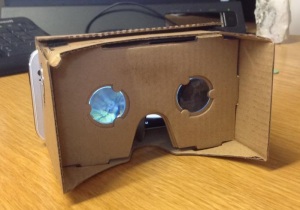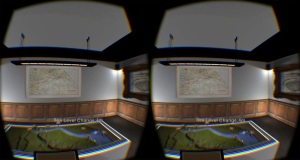I recently got hold of a Google Cardboard. Essentially, it is a piece of folded cardboard, a couple of cheap lenses and an elasticated strap. You fold it into shape – this takes a couple of minutes, it’s dead easy – and voila, it’s built. Next you take your smartphone, download the Google Cardboard App, or other supported App, and then slot your phone into the headset turning it into a very cheap VR headset.
I’ve tried a few things – it is really easy and just so very effective. It works a treat. All it does is display two images on your phone and splits them so one goes into your right eye and the other into your left, giving you the illusion of a 3D environment – it is rather different to the 3D you get at the cinema. Using the VR Cinema App you can view 2D videos on your phone, and although it doesn’t make them 3D it does give you an incredible view.
I’ve found that rather than using the Apps, the best features are videos you find on Youtube which have been filmed in the split image format – just maximise them and view them via the Cardboard. I think this is the way we will go with Humber in a Box rather than building a phone App – a video on Youtube would be so much simpler and just as effective.
I can see these being the way forward if you want to use VR as a teaching tool. The Oculus isn’t as expensive as most people think but is still >£350 a unit, whilst the Cardboard, or alternatives such as Hull-based VISR, are £10-20. They need a smartphone, but I imagine most students have one, and a lot can be achieved without specialist Apps.



